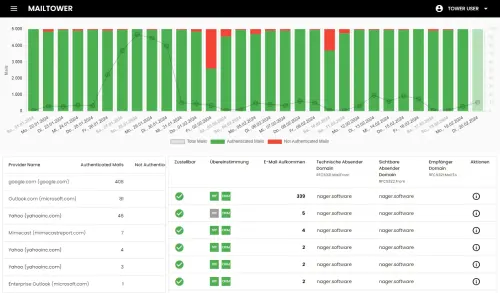User experience
Mail Tower offers a clean, modern user interface that prioritizes clarity and ease of navigation. We found the setup process to be streamlined, with helpful prompts guiding us through adding domains and configuring DMARC records. The dashboard presents key metrics like authentication rates and threat levels upfront, making it easy to grasp our DMARC posture at a glance.
Its reporting views are well-organized, allowing us to drill down into specific sending sources, SPF/DKIM failures, or geographic locations. The visual aids, such as graphs and charts, are effective in simplifying complex data. For users who prefer a managed service with a polished experience, Mail Tower certainly delivers.
DMARC-SRG provides a functional, albeit basic, user interface. As it's designed for self-hosting, the initial setup involves a degree of technical proficiency with PHP and web server configuration. Once running, the interface clearly displays parsed DMARC data, but it lacks the visual sophistication and interactive elements found in commercial tools.
Navigating the reports is straightforward for those accustomed to simpler, data-centric dashboards. However, users expecting advanced filtering, custom views, or proactive insights might find it too rudimentary. It serves its purpose of displaying DMARC data, but don't expect a guided tour or hand-holding through the nuances of email authentication.
































 0 / 5(0)
0 / 5(0) 0 / 5(0)
0 / 5(0)

